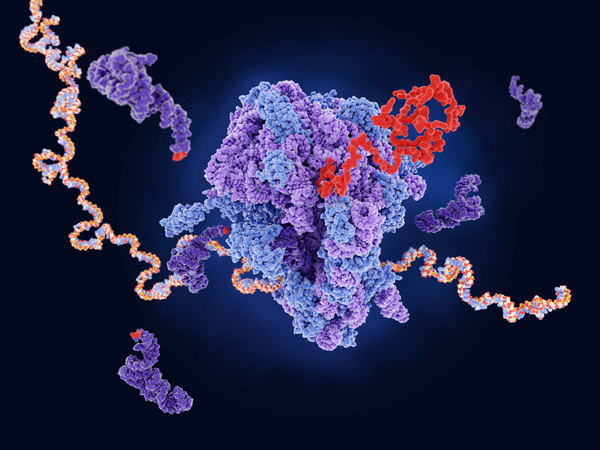
Figure 1: Illustration of a ribosome (center) producing a protein (red) from a messenger RNA (mRNA). This process lies at the heart of an enhanced method for identifying proteins that interact with bioactive molecules.© JUAN GAERTNER/SCIENCE PHOTO LIBRARY
An easy method for efficiently identifying proteins that interact with bioactive molecules has been developed by chemical biologists at RIKEN1. This could help to speed up the development of new drugs.
Bioactive molecules are so called because they participate in biological systems, and many of them are thus promising for developing new pharmaceuticals.
"Bioactive small molecules-both natural products and synthetic compounds-have great potential to be developed as drugs for various diseases," says Akira Wada of the RIKEN Center for Integrative Medical Sciences. "On the other hand, bioactive large molecules like antibodies are attractive as biopharmaceuticals for developing next-generation treatments with fewer adverse side effects."
To develop new drugs from bioactive molecules, it is first important to understand exactly how they work. Homing in on proteins that interact with bioactive molecules can provide new insights.
"When developing bioactive molecules as new drugs, it's crucial to identify target proteins that interact or react with them in order to elucidate their involvement in cellular activities and understand their underlying mechanisms of action," says Wada.
Wada had previously developed a method for identifying target proteins that interact with bioactive molecules from a pool of different proteins. The proteins are synthesized using ribosome-based machinery that translates messenger RNAs (mRNAs) into proteins.
The translation process is halted just before completion, resulting in a complex made up of the protein and mRNA connected by ribosome. These complexes are exposed to a bioactive molecule. If any of them bind to the bioactive molecule, their mRNAs are recovered, amplified and then used to identify the target proteins.
However, this method has several problems, including a low diversity of protein pools and the recovery of mRNAs of complexes that non-specifically bind to the bioactive molecule.
Now, Wada and co-workers have overcome these problems by tweaking the method principle. In the improved method, they used DNA and mRNA that are of equal length.
"The use of equal-length DNAs and mRNAs allowed us to create pools containing diverse proteins with a wide range of sizes," says Wada. "It also enhanced the operability and accuracy of the method, so that it just picked out the complexes that specifically bound to the bioactive molecule."
The team demonstrated the superiority of their improved method over the previous one by using it to identify various target proteins that could not be identified with the previous method.
In addition to identifying target proteins of bioactive molecules without expensive equipment, the method could also be used to explore new interactions between proteins of interest and unknown partner proteins. "This could contribute to our understanding of cancer, immunodeficiency disorders and neurological diseases," says Wada.






